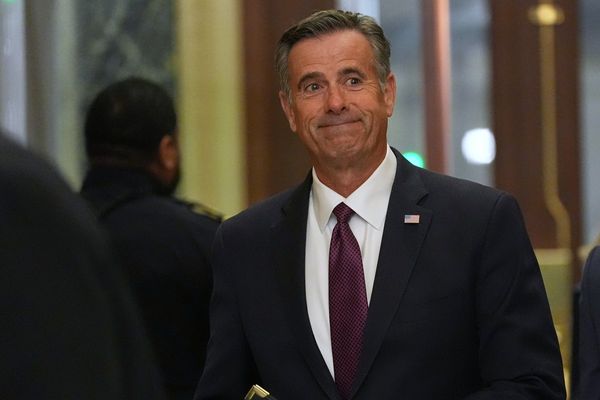SEOUL -- Following North Korea's launch Saturday of a long-range projectile, likely an intercontinental ballistic missile, the Kim Jong Un regime is expected to accelerate its military provocations under the pretext of countering the upcoming joint U.S.-South Korean military exercises.
Saturday's launch represented the first firing of a missile by Pyongyang since a short-range one on Jan. 1. North Korea last fired an ICBM three months ago.
According to Japan's Defense Ministry, the missile was launched Saturday at a nearly vertical lofted trajectory, flew for about 66 minutes, and reached an altitude of about 5,700 kilometers.
Notably, the trajectory of the missile is very similar to that of the Hwasong-17 missile -- an ICBM with an estimated range of more than 15,000 kilometers that North Korea launched in a lofted trajectory on Nov. 18 last year.
The Hwasong-17 had a flight time of about 69 minutes and reached an altitude of about 6,000 kilometers. The November launch took place from the Sunan area, north of Pyongyang, and fell in Japan's exclusive economic zone in the Sea of Japan, west of the island of Oshima-Oshima in Hokkaido.
The Feb. 18 "missile is similar in flight time and path to the one launched last November, indicating that North Korea's technology is becoming more stable," said retired Vice Adm. Yoji Koda, a former commander in chief of the Self-Defense Fleet.
Solid fuel type?
The Hwasong-17 is injected with liquid fuel just before launch, making it vulnerable to detection by reconnaissance satellites. Solid fuel compensates for this disadvantage by being able to be loaded in advance, making surprise attacks possible. Last December, Kim Jong Un observed a ground combustion test of a solid-fuel engine.
A new missile first unveiled in a camouflage-colored launch tube in North Korea's Feb. 8 military parade is believed to be a solid-fuel ICBM, and this may be the one launched this time.
Pyongyang apparently aims to deter Washington and Seoul by launching such a missile at this time.
The United States and South Korea will hold tabletop exercises and simulations in Washington on Wednesday under the assumption that North Korea is using nuclear weapons. Strengthening "extended deterrence" in which the U.S. protects South Korea with its nuclear umbrella is also the subject of the exercise. North Korea is strongly wary of these moves.
In addition, in mid-March, the annual U.S.-South Korea joint military exercises will be held in South Korea for the first time under the conservative administration of President Yoon Suk-yeol. In the past five years, the scale of the drills had been reduced at the behest of the then administration of leftist President Moon Jae-in, which was more conciliatory toward North Korea.
The Yoon administration, in its National Defense White Paper, describes the North Korean regime and military as "our enemy" and is expanding the scale of the March exercises.
As in the previous year, a scenario in which North Korea repeatedly launches missiles in response to the U.S.-South Korea exercises is expected this year.
Read more from The Japan News at https://japannews.yomiuri.co.jp/







